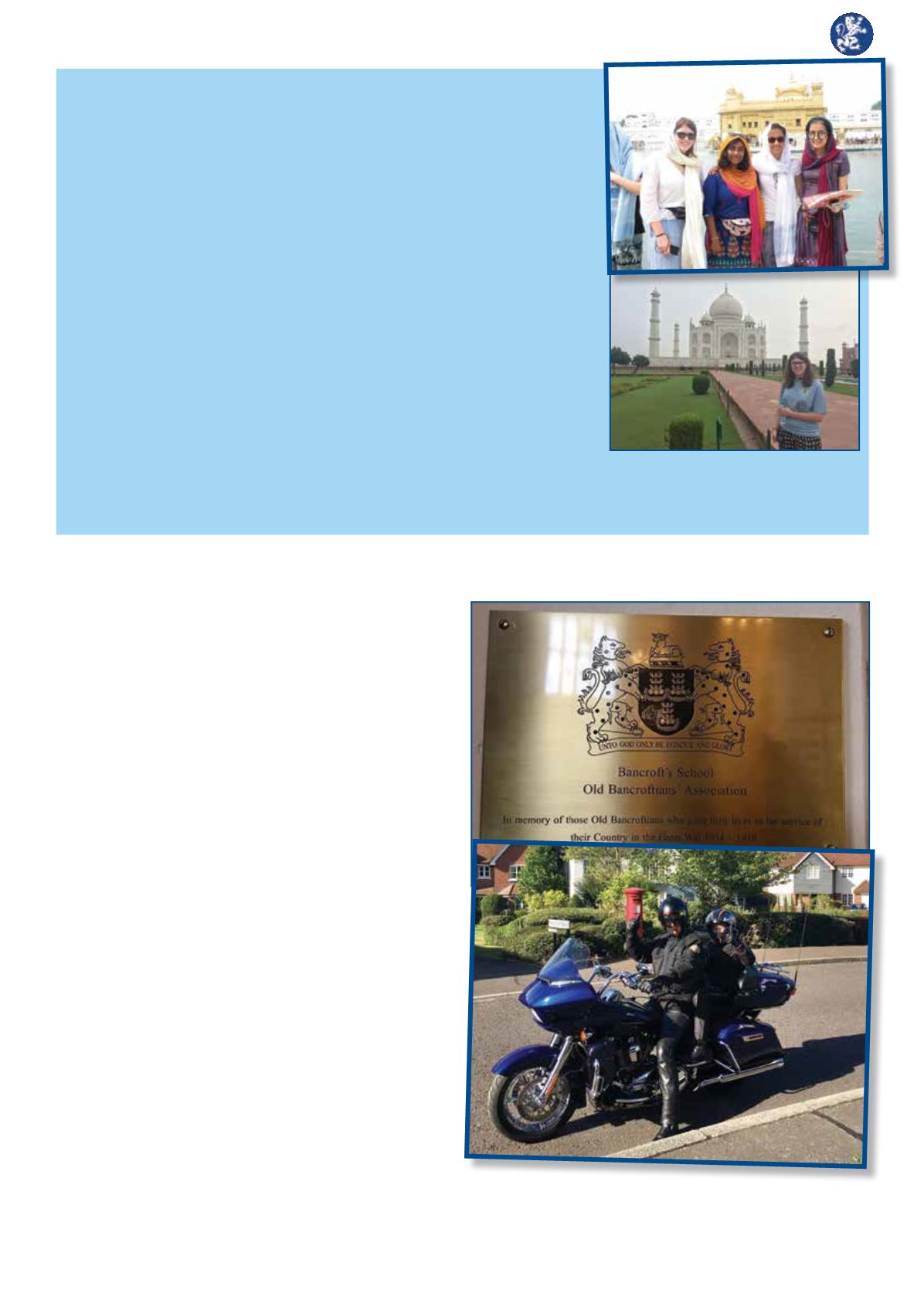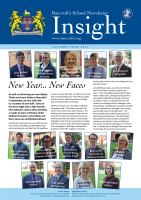

Remembering Passchendaele
Harry Blisset, 3E
When my Dad and I left our house on our motorbike
on the way to a once in a lifetime opportunity, we
realised how privileged we were to be one of the 200
descendants to attend the 100th Anniversary of the most
horrific battle of the First World War, the 3rd Battle of
Ypres (Passchendaele). As we arrived at the Euro Tunnel
we rode aboard and, half an hour later, we emerged
from the tunnel to greet the stunning French scenery and
the fabulous holiday that lay in wait. We stayed in a hotel
in Belgium and on day two we had time in the morning
to visit the Museum Aan De Ijzer in the Yser Tower.
At 4pm we set off to the Menin Gate. After a quick change at the side of
the road into our smart suits, we went to St George’s Church in Ypres. I
was proudly wearing my Great Grandpa's medals: The Mons Star, The
Victory medal and the British War medal. These were nicknamed Pip,
Squeak and Wilfred. In St George’s Church there were many plaques
on the wall and I was looking for one commemorating the stretcher-
bearers (my Great Grandpa was in the Royal Army Medical Corps);
during my search I noticed plaques remembering the schools which
fed the army with recruits. I showed my Dad and we started walking
around the chapel and eventually found one with the Bancroft’s badge
honouring the Old Bancroftians who gave their lives for a better future
for us. I was so proud to see my new school on the wall.
We then marched to the Menin Gate, with a band leading, for the
Last Post ceremony in the presence of Theresa May, the King and
Queen of Belgium and the Duke and Duchess of Cambridge. I stood
just three people away from Theresa May, and when the service was
televised. I was shown walking along with my Dad! We stood close to
my Great Great Uncle's name which is listed on the Menin Gate and
who died in this great battle in 1917. We then went to a reception at
Cloth Hall and came outside to watch an event in the Market Square.
The projections on the side of Cloth Hall were stunning.
The next day we went to the Passchendaele memorial service at Tyn
Cot Cemetery. Prince Charles was there and marching military bands
played. Many people read letters from the soldiers about the battle to
their family and loved ones. It was a very moving experience. After this
we went to the dugout which was shown on BBC 1 morning news.
This was a dugout, preserved after 100 years under water and opened
just for 100 days to mark this battle in history as it lasted 100 days.
We now had to head home and as we rode along we reflected on
how special the event was and how proud and honoured we felt to
have been so lucky to honour our relatives.
Experiencing India
Miss Louisa Jones
In July, 23 Bancroftians and three
members of staff made their way to
northern India. The trip was billed as
the trip of a lifetime and the itinerary
promised a variety of experiences,
from seeing the Golden Temple in
Amritsar, to learning about the plight
of the Tibetan refugees, to visiting
the Taj Mahal in all of its white
marble glory.
The town of Dharamshala, located in
the verdant lower Himalayas, featured
prominently on the programme and is
where the Dalai Lama has lived in exile since
1959. Despite the country’s worst monsoon
season for 60 years, we had opportunities
which we might never have had in other
circumstances. Our pupils demonstrated
incredible patience with refugee children
from Tibet and Rajasthan while visiting one
charity; on another occasion, the Tibetan
refugee children sang to our pupils and we
responded with a rousing version of Floreat
Bancroftia, probably never to be heard
again in the Indian Himalayas. The plight
of women within Tibetan culture shed a
light on women’s issues which resonated
with our pupils, not least because it offered
an opportunity for reflection on our own
society’s values and attitudes. On a day hike,
our pupils felt lucky that leeches do not
attach themselves to their ankles on their
Duke of Edinburgh’s Award expeditions, like
they did in India.
Our trip ended with a visit to the Taj Mahal,
which was undoubtedly a highlight. We
visited at 7 in the morning, when the site is
relatively peaceful. Happily, we avoided the
temptation to recreate the famous Diana
shot. If nothing else, the Taj Mahal was a
reminder of what an extraordinary country
India is, full of contrasts and impressive
history. I would like to thank the pupils and
my fellow staff members for their good
humour throughout the course of the trip. I
know for certain that we all came away with
many unforgettable memories.
12 HUMANITIES

















